How Kitchen Cabinets Should Be Organized in 2025
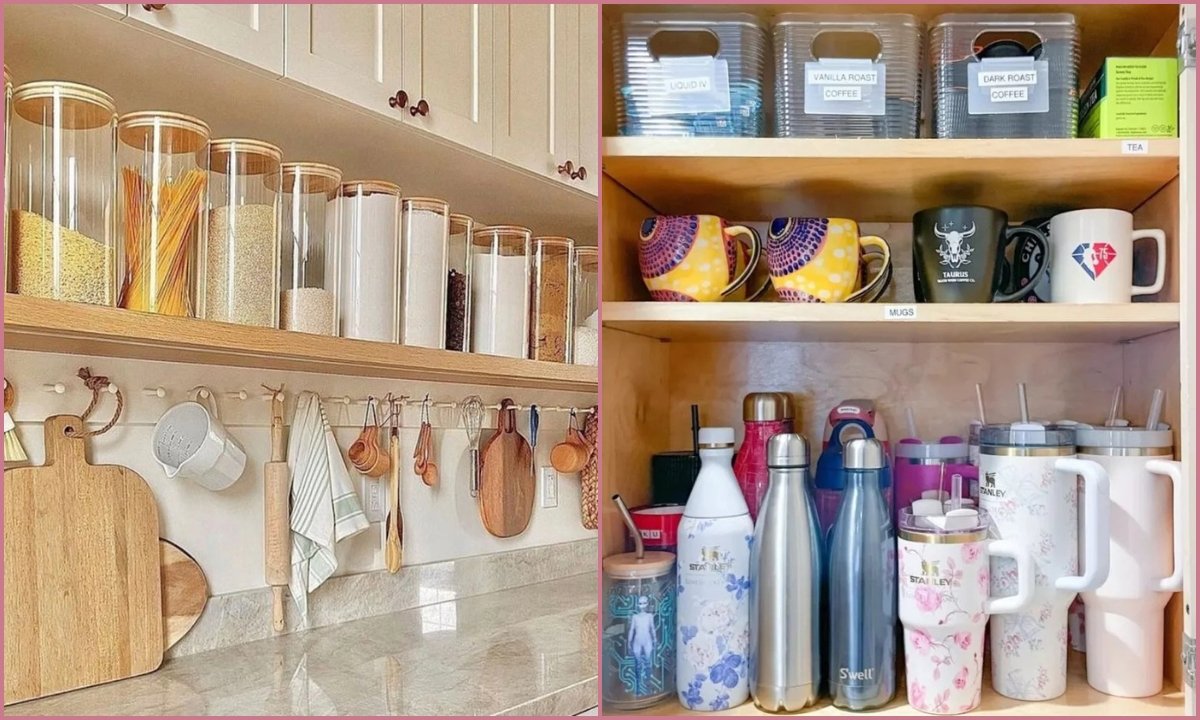
When you open your kitchen cabinets and see cluttered shelves, mismatched containers, and items you can’t reach easily, you can feel frustrated right away.
If you’ve ever wasted time hunting for spices hidden behind cereal boxes or struggled to fit new groceries into an overflowing cabinet, you know how much stress poor organization can cause you.
In this article, you’ll see practical strategies you can use to organize your kitchen cabinets so every item has its place and your kitchen feels functional.
Let’s jump in!
Why Most Kitchen Cabinets End Up Messy?
Let’s be real, your kitchen cabinets won’t stay neat for long. You might shove things in randomly, and over time, you can forget what’s hiding in the back.
You may even end up with three sets of measuring cups, but only use one. The biggest reason? You’re organizing by item type, not by how you actually use your kitchen.
If your layout doesn’t match your daily routine, you won’t make it last. That’s why you should change how you think about organizing.
It’s not about Pinterest-worthy pictures, it’s about how you can make your kitchen work for you. And it all starts when you hit reset.
6 Tips to Organize the Kitchen Cabinets in 2025
1. Start with a Full Reset Before You Organize
Before you buy any bins or labels, you should pull everything out, every cabinet, every drawer.
You can lay it all out so you see exactly what you’ve been storing, like unused appliances, expired cans, or tools you even forgot you had.
You should give your shelves a good wipe-down while you’re at it. Then you can toss or donate what you don’t use.
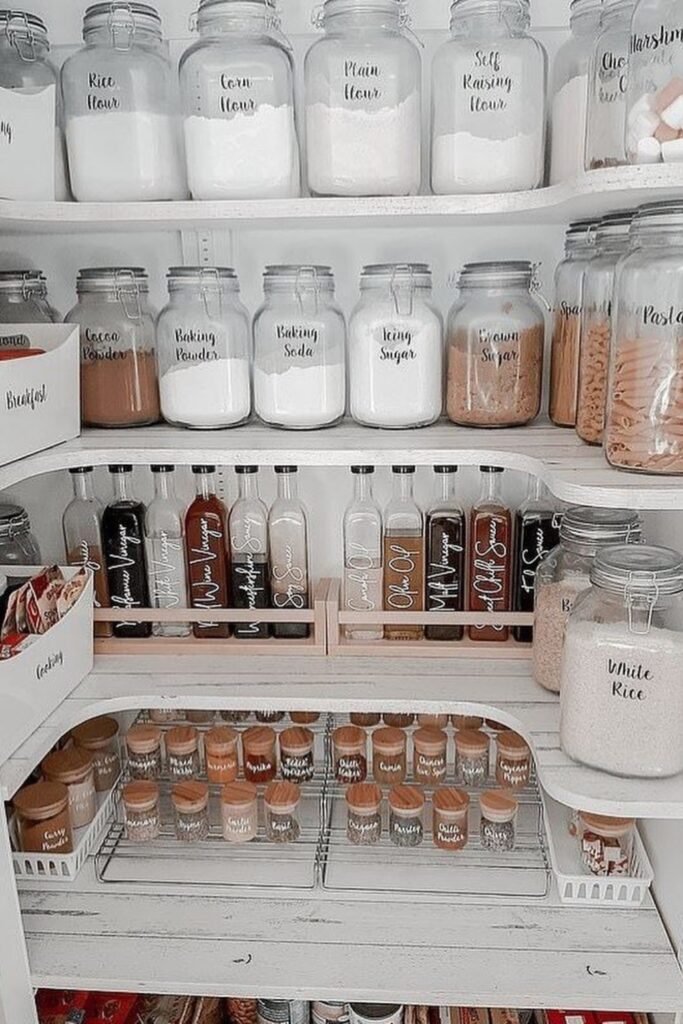
You shouldn’t organize junk, you should only keep what actually fits your current lifestyle.
This step will give you the clean slate and help you clear your head. From here, you can build a setup that really works.
2. Organize Cabinets Based on Real-Life Tasks
You should stop grouping things only by category and start grouping them by how you actually use them.
You don’t need all the mugs together; you can set up a coffee station with mugs, pods, sugar, and spoons in one spot.
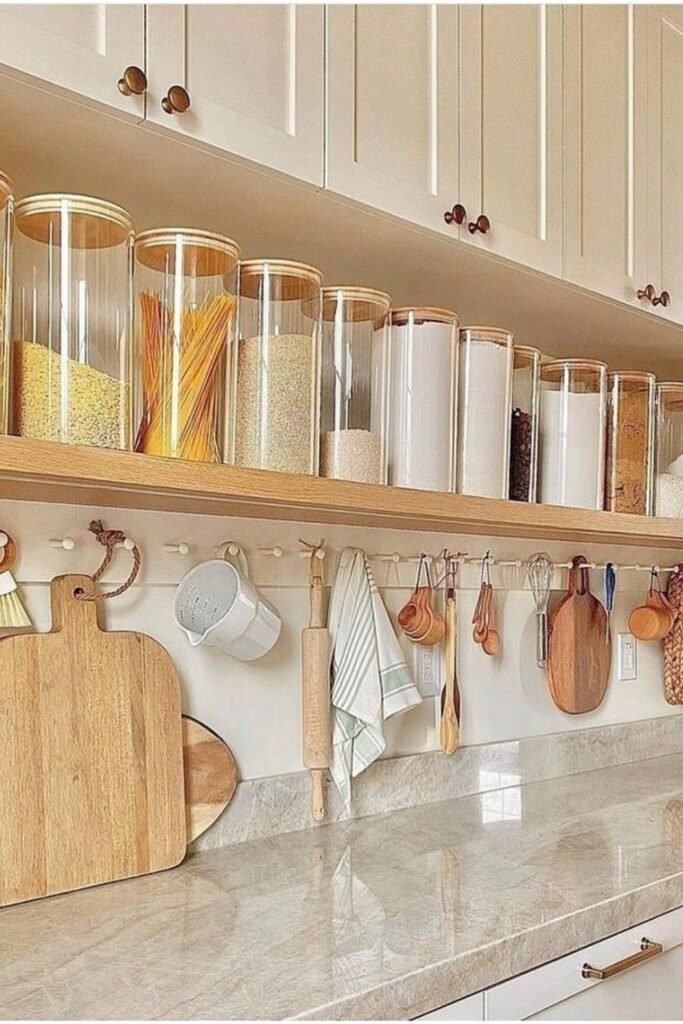
You can think in zones: a breakfast zone, a baking zone, a prep zone, and a cleaning zone. This way, you will save steps and your kitchen will feel faster and easier.
You should also keep lunchboxes, snack bags, and water bottles in a school-lunch zone.
You must make your cabinets serve your routines, not the other way around. And remember, it’s not about perfection, it’s about function.
3. Keep Everyday Items Right Where You Need Them
You use your plates and bowls every single day, so you shouldn’t keep them above the fridge or below your knees.
You should place daily-use items between your shoulders and your hips, that’s your easy-reach zone. You can put less-used stuff higher or lower.
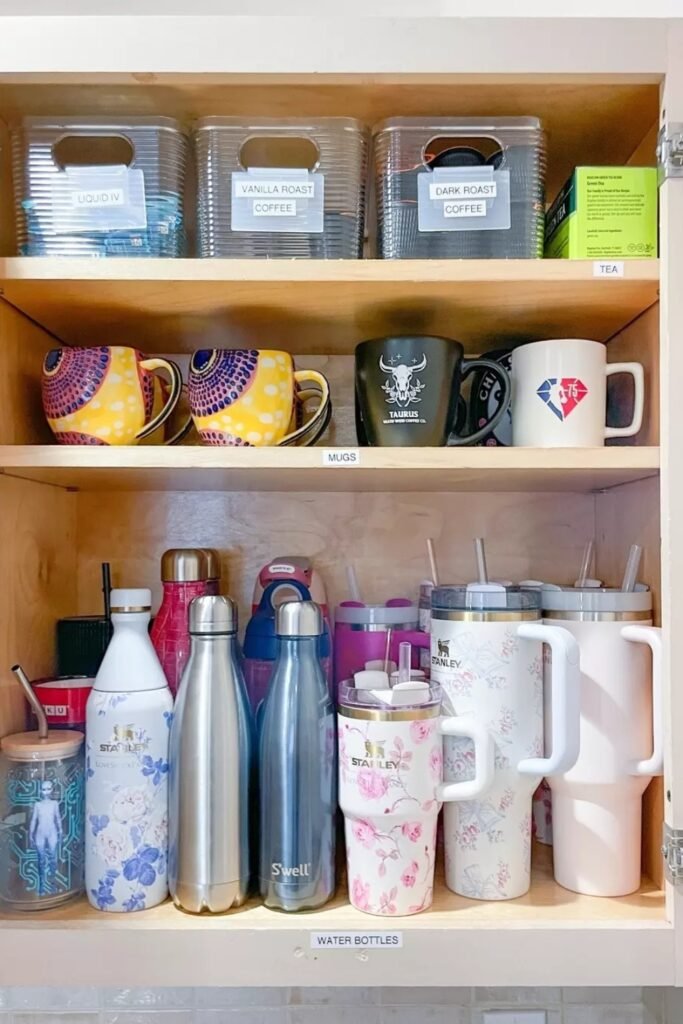
If you find yourself bending or stretching all the time, you must know it’s in the wrong place. You can rearrange your shelves based on reach, and cooking will feel smoother and safer.
You’ll also stop knocking things over just to grab what you need. Small shift, but you can see a big impact.
4. Use the Space Most People Forget
You actually have more cabinet space than you think, you’re just not using it right. You can use the inside of cabinet doors to store pot lids, wraps, or even small spice racks.
You should add shelf risers so you can double-stack mugs or plates without piling them dangerously high.
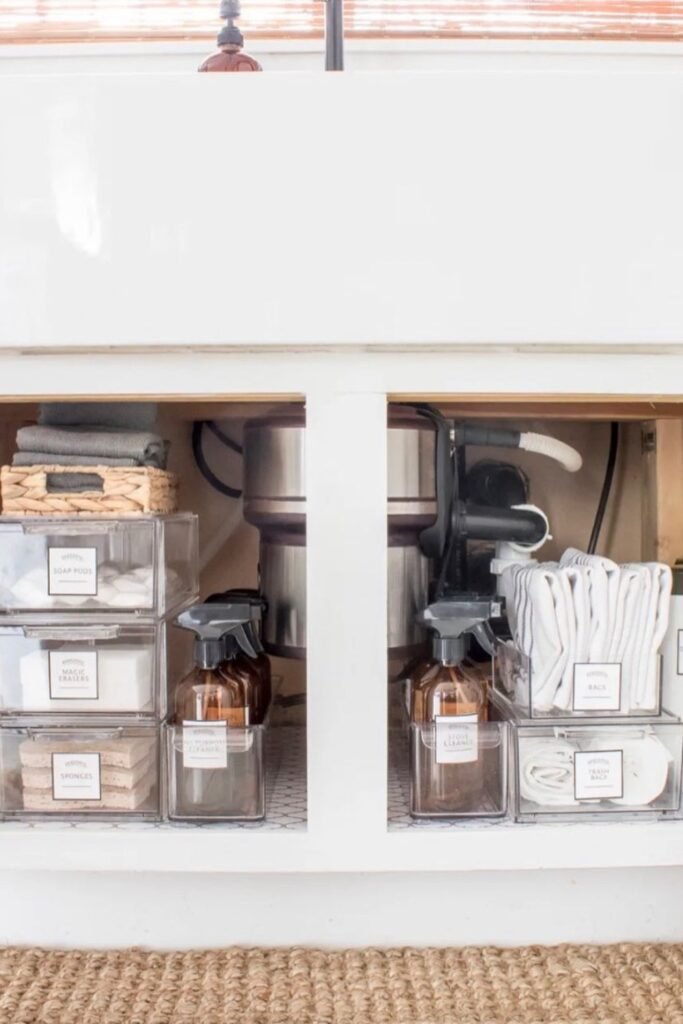
You can also use under-shelf baskets or tension rods to hang tools or cutting boards.
These cheap little upgrades will turn dead zones into smart storage, and you don’t need a full renovation for that. It’s all about how you stack smart not how you stack more.
5. Match Storage Tools to Your Space
You shouldn’t just buy bins and hope they’ll work; you must measure first. You should get organizers that actually fit your cabinet width and height.
If you have deep drawers, you can use tall bins, and if you have shallow shelves, you should go for stackable risers or trays.
You can use clear containers whenever possible, because you should always see what you’ve stored.
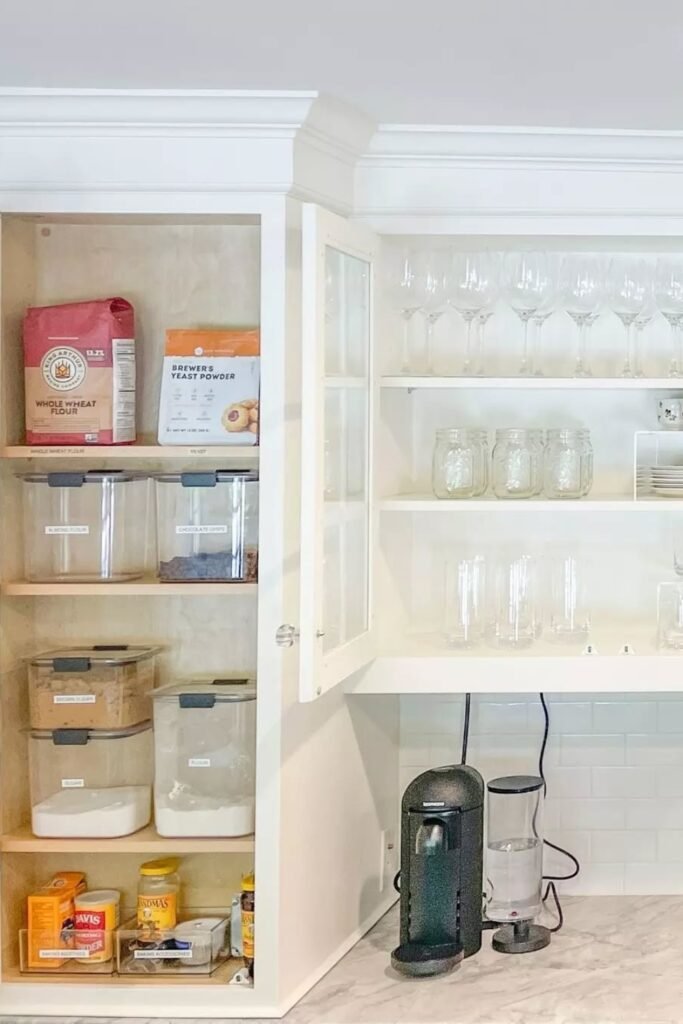
You can also add drawer dividers for utensils or spice packets so things don’t slide around.
You shouldn’t overcrowd either, you should leave a little breathing room so you can easily grab what you need.
Remember, a well-fitted bin will always serve you better than a pretty one that doesn’t work.
6. Label What You Can’t See Clearly
If you forget what’s in your cabinets, you shouldn’t blame yourself, your system just isn’t working.
You should label your bins. You can use chalk labels, sticker tags, or even a label maker, whatever works for you.
Especially for food storage, snacks, or cleaning products, you must add clear labeling to save time.
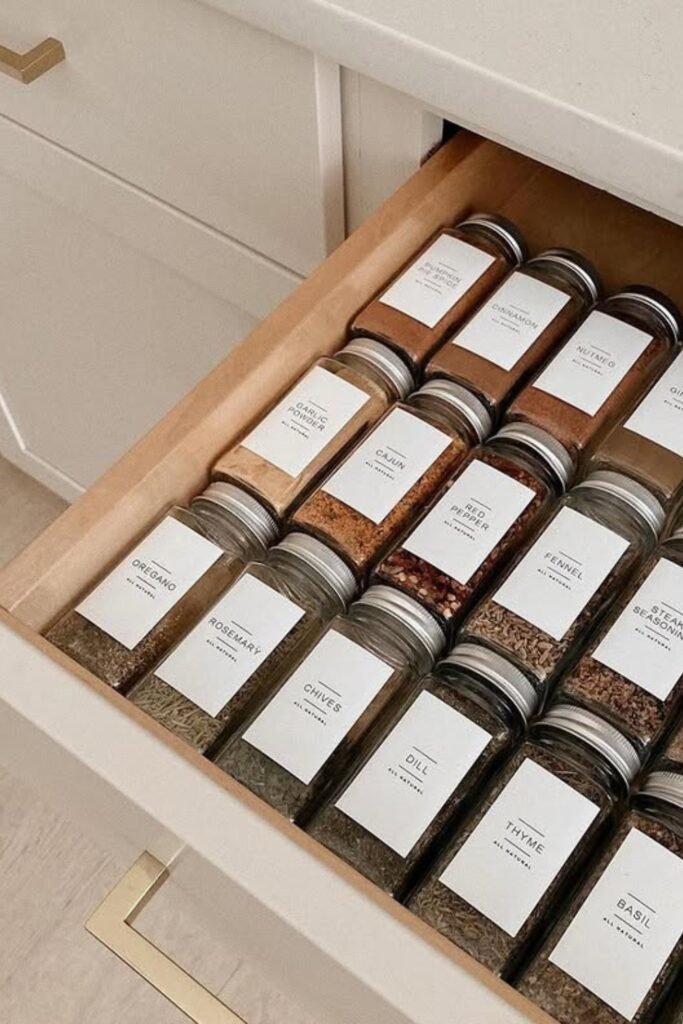
You won’t have to open five containers to find flour, and you won’t have to guess what’s hiding in that back corner.
You don’t need to label everything, but you should label the things that usually get forgotten or shared.
Labels = visibility, and visibility means less waste and more use.
How Can You Make It Easy to Keep Cabinets Organized?
You cleaned it once but will it stay that way? That will depend on your habits.
You should set a monthly 10-minute reset: check for expired items, shift things back to their zones, and wipe down your shelves.
If something isn’t working, you must fix it, not ignore it. You can also follow the “one in, one out” rule for tools and gadgets.
And if a bin isn’t being used, you should repurpose it or let it go. Good organization doesn’t mean strict rules, it means building a system you’ll actually stick to.
Conclusion
You don’t need fancy organizers or a giant kitchen to make your cabinets work. You just need a system that will fit how you cook, clean, and live every day.
When everything has a purpose and stays in the right spot, your kitchen will become easier to use, less mess, less stress.
You should start with what’s not working, fix it with small changes, and then build from there.
FAQs
How do I figure out which cabinet layout works best for my kitchen?
You can start by watching how you move while cooking. What do you reach for most? What slows you down?
You can group your items based on tasks like keeping all your baking tools in one zone, or a drawer near the stove for spices and spoons.
Once your layout will match your routine, you’ll notice that everything becomes easier.
Should I organize my cabinets differently if I have kids?
Yes! You can make daily-use items like kid snacks, plastic plates, or lunch boxes easy to reach by placing them in lower cabinets.
You’ll want to keep breakables or cleaning products up high, out of reach. If your kids can’t read yet, you can label bins with pictures so they know what goes where.
When you set up your kitchen this way, you keep things safe and also teach your kids to help with cleanup.
You may love to read!
